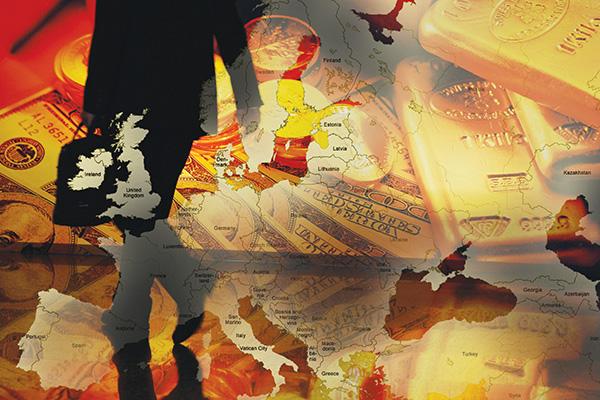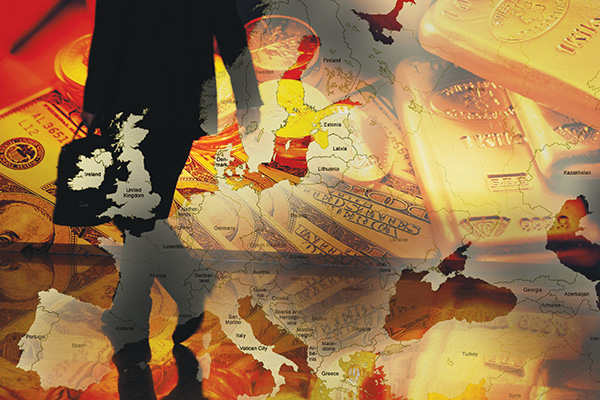
Skip to
The image of group of Chinese consumers – mostly women – flocking to European shopping malls, cleaning out Coach stores, grabbing dozens of Louis Vuitton bags and baskets of Sephora cosmetics is already a staple in Western media.
But the shopping frenzy is not restricted to these fashion-conscious women any more. Also keen to snap up iconic European brands are Chinese companies, both state-owned and private.
Chinese investment in Europe reached a new record in 2014, totaling $18 billion through 153 deals, according to law firm Baker and McKenzie.
“It shows the economic giant is playing a long-game in Europe, making a long-term bet and has moved far beyond ‘distressed asset’ purchases,” says Thomas Gilles , the Chairman of the EMEA-China Group at Baker & McKenzie.
Most recently, National Chemical Corporation (ChemChina), a state-owned conglomerate agreed to buy tire maker Pirelli in a $7.7 billion deal that will place one of the symbols of Italy’s manufacturing industry in Chinese hands.
The deal with Pirelli’s shareholders is the latest in a string of takeovers in Italy by cash-rich Chinese buyers, who are taking advantage of a weak euro just as Europe emerges from its economic stagnation. Excluding the financial sector, Italy is the second-biggest acquisition market for China in Europe and fifth-largest worldwide, with 10 deals completed since the start of 2014, according to Thomson Reuters data. The deal will give ChemChina access to technology to make premium tires, which can be sold at higher margins, and give the Italian company a larger presence in the huge Chinese market.
Previous Chinese acquisitions in Italy, the euro zone’s third-largest economy, include stakes in power grid firms Terna and Snam, turbine maker Ansaldo and luxury yacht maker Ferretti.
Back to topWhy Europe?
But it’s not just Italy. The tentacles of Chinese acquisition are spreading all over Europe. In Britain, which is the biggest recipient of the Asian country’s foreign direct investment in the continent, Chinese firms have stakes in Thames Water and Heathrow airport. In Greece, a Chinese firm runs part of the port of Piraeus. In Sweden, China’s Geely purchased the iconic Volvo brand in 2010. In France, China has invested in another renowened carmaker, Peugeot Citroën; in Toulouse airport; and in Club Med, a resort operator.
One of the key reasons that Europe is attractive to China’s investors is because it has lots of businesses going cheap. The cash-strapped firms and a weak euro, plus the ongoing privatisations propelled by various national governments, provide ample opportunities to Chinese investors.
But it wasn’t always like this. FDI from China into Europe barely existed until 2004 and then averaged less than $1 billion annually. Then, in 2009, investment flows tripled to nearly $3 billion, before tripling again in 2010 to more than $10 billion. Some $55 billion has been invested since 2009.
Until 2011, China was mostly a recipient of European investment, but then the debt crisis in Europe drove down asset prices. Since then, governments have been keen to privatise hitherto state-owned industries, and corporations are also becoming less picky about potential investors. And aside from the relatively cheap prices and an open market, European companies have two things that Chinese companies are after: high technology and household names.
And the Pirelli deal, to name a few, is an example of the latter. China’s buying party China National Tire & Rubber Company is hardly heard of in Europe. With plenty of cash, ChemChina would certainly regard Pirelli as a good deal.
Another important driver of outbound investment has been the rapid change in China’s approach to its domestic economy: the central government has been increasing incentives for its companies to invest overseas. For example in December 2013, the State Council issued a notice following which its ministries lowered the approval thresholds, resulting in new rules that stated that approval from the National Development and Reform Commission (NDRC) and the Ministry of Commerce is only required for transactions above a certain size or in sensitive sectors and countries.
Back to topInvesting Trends
Chinese investors’ appetite for Europe is obvious. But their way of investing, as well as the industries they are willing to put their money, has changed over the years.
In the last three years, the average value of greenfield projects has been growing, according to data from Baker and McKenzie. Previously targeting mostly offices and smaller administrative operations, Chinese firms have recently shown more willingness to invest in greenfield projects with significant capital expenditure.
The composition of merger and acquisition activity has also changed substantially since 2011. One important trend is the growing importance of small and medium-sized M&A deals, often undertaken by financial investors. They are less prone to annual fluctuations than large-scale transactions and provide another confirmation of the structural expansion of China’s private sector in Europe.
“Chinese investment in Europe has become much more diverse in recent years and is now extending into all parts of Europe.” says Gilles, a Germany-based partner at Baker & McKenzie. “What we’re seeing is the maturing and normalization of Chinese investment processes in line with the international economy.”
The top recipient of Chinese FDI in 2014 was the United Kingdom, with more than $5.1 billion in total, followed by Italy with $3.5 billion, Netherlands with $2.3 billion, Portugal with $2 billion and Germany with $1.6 billion.
Industry-wise, the top recipient of Chinese capital was Europe’s energy sector, which received a total of $17 billion. The automotive industry is the second largest recipient with $8 billion, followed by agriculture and food, real estate, industrial equipment information and communications technology, basic materials, transport and infrastructure and finance and business services.
“While crisis opportunities and low valuations still play a part, consistently high levels of investment in an increasing number of sectors and countries where assets no longer look cheap suggests that Chinese FDI in Europe is a structural trend, not just a cyclical phenomenon,” Gilles added.
But booming investment also comes with challenges. The biggest challenge is adapting to a culture of compliance that is very different from what they are accustomed to in China.
Michael Vella, a partner at Jones Day says that there are numerous regulatory requirements that Chinese companies will confront for the first time when going into Europe, including labour regulations, environmental regulations and competition regulations.
“China, of course, has its own laws in these areas, but Chinese companies have been able to work around these issues using their relationships with Chinese regulators. That will not work in Europe,” Vella says. Morever, even after the merger, the Chinese buyers may also face challenges for post-merger integration and business operation due to language and cultural differences and more stringent regulatory climate in Europe, according to industry insider.
But it always takes time and experience for everyone to become comfortable with the differences in foreign legal regimes and business culture.
“Like multinational companies in any other county, the Chinese companies will gradually learn and grow in the new environment, though a few of them may need to pay some learning fees,” said Danian Zhang, a Shanghai-based partner with Baker & Mckenzie.
Back to topWhat's Next
The imminent launch of the China-led Asian Infrastructure Investment Bank (AIIB), will certainly add clout to China’s influence in Europe.
The AIIB, seen as a challenge to existing institutions such as the World Bank and Asian Development Bank, has drawn a cool response from the United States, in spite of which the country’s European allies including Britain, France Germany and Italy have already announced they will join the bank.
“I believe this is indicative of Europe’s interest in strengthening its political and economic relationship with China. Given the US’ position on AIIB and China’s role in it, the European countries may see this as an opportunity to put themselves in a position to become partners with China, particularly with respect to the growth markets in Asia,” says Ian M. Liao, a partner with Jones Day.
The AIIB has been seen as a significant setback to U.S. efforts to extend its influence in the Asia-Pacific region to balance China’s growing financial clout not only in Europe, but elsewhere as well. And the fact that EU countries have defied the U.S. in joining the China-led bank indicates that the benefits of joining will outweigh the risks and a closer tie between China and EU is nothing but inevitable even with a slowdown of Chinese economy.
With Chinese economy now entering into a time of “new normal” a slower but steady model of economic development, lawyers in this industry still see a promising landscape.
“I expect the slowdown of the Chinese economy will only increase the investment outside China as Chinese companies now need to diversify their risks beyond China. Europe presents a particularly good investment opportunity as some European companies were hurt by the economic crisis, but could now be poised for growth with the help of an infusion of Chinese money.” Vella said.
Back to top


